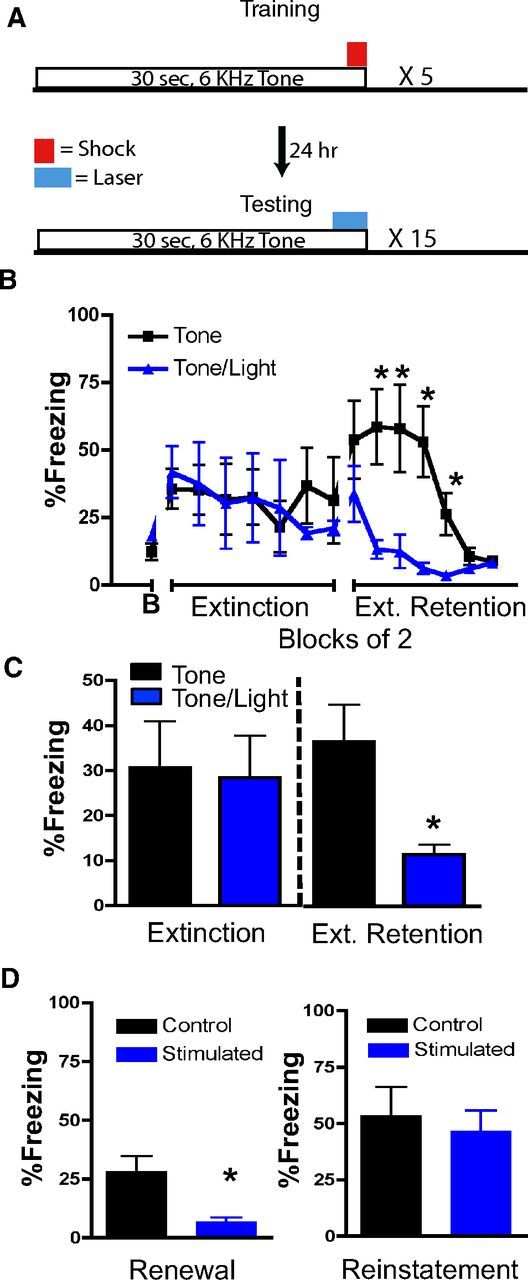Figure 5.

Discrete optogenetic activation of Thy1 neurons within BLA enhances extinction learning. A, Top, Fear training paradigm. All cannulated Thy1-ChR2-EYFP mice were trained with five trials of tones (30 s, 6 kHz), which coterminated with a 0.5 s footshock (0.5 mA). Bottom, Twenty-four hours later, in a separate context, all mice received 15 trials of tones (30 s, 6 kHz) coterminating with either sham stimulation or with a 2 s, BLA-targeted, blue light (20 Hz, 15 ms). B, No difference between sham versus optogenetically activated groups was seen during extinction training (B, Baseline freezing during extinction before CS presentation). However, 24 h later, mice that received the blue light during extinction (n = 5) showed much lower freezing to the cues compared with controls (n = 5), consistent with dense extinction (Ext.) retention. C, Representation of data from B as a bar graph. Left, Average freezing responses during extinction to 15 tone presentations and in the presence or absence of optogenetic stimulation. Right, Average freezing responses from B during extinction retention testing in the absence of optogenetic stimulation. Mice that had been extinction trained in conjunction with optogenetic activation showed enhanced extinction retention. D, Twenty-four hours later, mice were fear tested in the initial conditioned context. Those without optogenetic stimulation (n = 5) showed renewal of fear, whereas those with optogenetic stimulation (n = 5) had minimal freezing to the tone. Following footshock reinstatement in a new context, all mice showed similar levels of tone-activated freezing behavior. Error bars represent mean ± SEM. *p ≤ 0.05.
